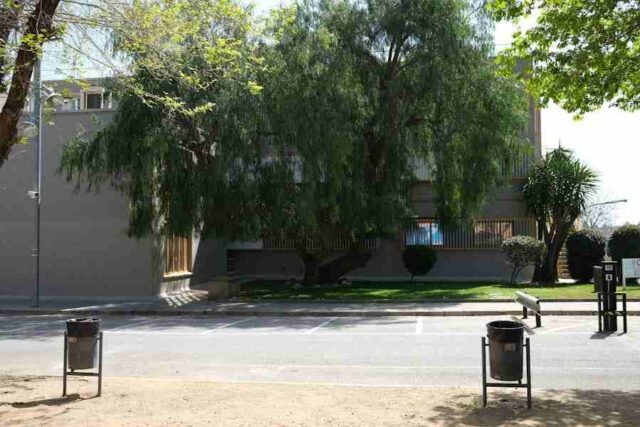Urban neighborhoods often struggle with limited green space, aging infrastructure, and a lack of inviting outdoor areas. However, thoughtful planning and community involvement can transform these spaces into vibrant, functional, and aesthetically pleasing environments. From small pocket parks to large communal courtyards, revitalizing outdoor spaces enhances livability, promotes social interaction, and contributes to overall well-being.
The Importance of Outdoor Spaces in Cities
Well-designed outdoor spaces serve as the heart of a community. They provide places for relaxation, recreation, and socialization. Green spaces help combat the urban heat island effect, improve air quality, and support mental health by offering a refuge from concrete and traffic. Whether it’s a revitalized plaza, an updated playground, or an urban garden, these spaces bring people together and foster a sense of belonging.
Strategies for Transforming Urban Outdoor Spaces
1. Community Engagement and Collaboration
Revitalization projects thrive when they involve local residents. Community-led initiatives ensure that projects align with the neighborhood’s needs and culture. Holding public meetings, conducting surveys, and forming resident-led committees help build support and create spaces that reflect the community’s identity and meets their needs now and in the future.
If the community is able to be involved in building a local outdoor space, this can make members of the community feel like it is something they can take pride in and look after for future generations. It also opens the opportunity to have an initiative for members of a community to be involved in an outdoor project, enabling the chance to gain practical skills.
2. Integrating Greenery and Sustainable Design
Adding trees, shrubs, and flower beds beautifies an area and improves air quality and biodiversity. Creating small patches of native plants can attract pollinators and help their urban populations. Vertical gardens, rooftop green spaces, and native plantings offer practical solutions for high-density urban areas. Sustainable materials, permeable pavements, and rain gardens help manage stormwater runoff and reduce environmental impact.
3. Multi-Use and Adaptive Spaces
Flexibility is key when revitalizing urban areas. You need to consider spaces that can accommodate a range of activities and events like markets, outdoor performances, exercise classes, quiet reading corners, and even safe spaces for kids and teenagers to hang out without feeling like they are in the way. These need to be created in a way that maximizes their use and appeal with modular seating, retractable shade structures, and portable planters and decorations that allow the spaces to evolve based on their use and the community’s needs.
4. Public Art and Cultural Elements
Art is a fantastic way to uplift the mood of a community. You can incorporate art into a space by using murals, sculptures, and interactive installations. This will contribute to a neighborhood’s character and attract visitors to see the work. It is an opportunity to collaborate with local artists and schools, adding authenticity and cultural significance to these spaces. Public art also acts as a deterrent to vandalism and graffiti, encouraging pride in the environment.
5. Improved Lighting and Safety Measures
A well-lit outdoor space extends usability into the evening, making parks and gathering spots safer and more inviting to everyone in the community. Solar-powered lights, motion-activated fixtures, and strategic placement of streetlights can enhance security without creating light pollution. Incorporating open sightlines and visible security features fosters a sense of safety.
6. Comfortable and Durable Outdoor Furniture
Urban spaces should include a variety of seating options, from traditional benches to informal picnic areas, and even have some tables and chairs for people to sit at and move around as they need to. Weather-resistant materials and ergonomic designs can improve comfort and longevity. Shade structures, such as pergolas or tree canopies, make these areas pleasant to use all year round.
Enhancing Outdoor Spaces with Paint and Color
A fresh coat of paint can breathe new life into neglected urban areas. Colorful facades, artistic crosswalks, and revitalized playground equipment create visual interest and energize spaces. Professional painters can help transform dull exteriors into inviting focal points, boosting neighborhood pride and curb appeal. To find skilled professionals, check out outdoor painters near me to ensure high-quality, weather-resistant finishes.
The Role of Local Governments and Private Partnerships
While community-driven initiatives play a crucial role, support from local governments and businesses accelerates revitalization efforts. Cities can allocate funds for improvement projects, streamline permit processes, and provide grants for beautification efforts. Partnerships with private developers, nonprofits, and local businesses can further fund and sustain revitalization projects. Public-private collaborations often lead to long-term maintenance plans that keep these spaces thriving.
Case Studies of Successful Urban Space Revitalization
1. The High Line, New York City
Once an abandoned railway, the High Line has been transformed into an elevated public park featuring lush greenery, seating areas, and art installations. This space has become a model for urban revitalization, attracting both locals and tourists while boosting nearby property values and businesses.
2. Superkilen Park, Copenhagen
Designed as an inclusive space for a diverse community, Superkilen Park incorporates cultural elements from over 60 nationalities, featuring unique seating, playgrounds, and public art. This project highlights how outdoor spaces can reflect and celebrate a neighborhood’s multicultural identity.
3. The Beltline, Atlanta
A former railway corridor has been redeveloped into a multi-use trail connecting neighborhoods across Atlanta. The Beltline features parks, markets, and recreational spaces, improving connectivity and quality of life for residents.
Encouraging Long-Term Engagement and Maintenance
Revitalized spaces require ongoing care to remain inviting and functional. Community stewardship programs, such as adopt-a-park initiatives, volunteer clean-up days, and local fundraising events, ensure sustained upkeep. Cities can also implement policies that encourage responsible use, such as designated areas for dogs, litter prevention programs, and regular safety inspections.
Conclusion
Revitalizing outdoor spaces in urban neighborhoods is a powerful way to enhance community well-being, foster social connections, and improve environmental sustainability. By incorporating greenery, flexible design, artistic elements, and professional craftsmanship, cities can create spaces that serve as lasting community hubs. With the right mix of community involvement, government support, and private-sector collaboration, these transformations can turn neglected areas into thriving urban retreats.














